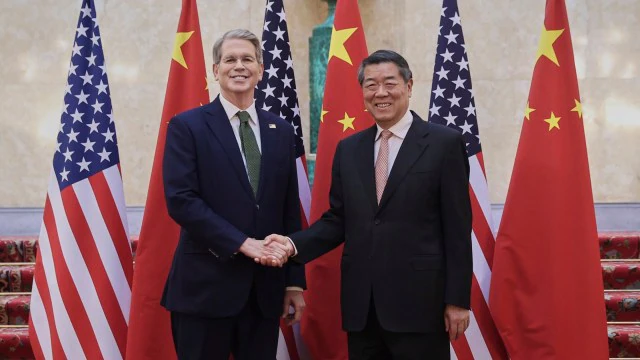On August 11, 2025, President Trump signed an Executive Order under the International Emergency Economic Powers Act (IEEPA), marking a significant development in the ongoing trade relation between the United States and the People’s Republic of China. The order revises reciprocal tariff rates on Chinese imports and represents a continuation of progress in bilateral trade negotiations. Central to this action is the agreement by both nations to extend their existing tariff truce for an additional 90 days, pushing the current deadline to November 10, 2025.
Under the terms of the extension, the US will maintain its present tariff structure on Chinese goods, which includes a 10% IEEPA tariff, a 20% tariff targeting fentanyl-related imports, and other duties imposed under Section 301, Section 232, and the Most Favored Nation (MFN) status provisions. These rates remain in force as negotiations continue, providing a measure of predictability for US importers in the short term.
The Executive Order also contains provisions to adjust the application of reciprocal duties on imports from China to reflect the evolving terms of negotiation. However, the precise changes to these reciprocal tariff rates have not yet been disclosed, leaving room for possible adjustments before the new November deadline. Businesses engaged in global trade with China are advised to remain attentive to official communications from both US and Chinese authorities, as updates to duty rates may be announced in the coming weeks.
The tariff truce is offering short-term breathing room for global shipping and trade flows, but its effects are already visible across logistics networks. US ports, including Los Angeles, reported record July import volumes as many importers front-loaded orders ahead of the earlier tariff deadline. At the same time, many companies are accelerating “China + 1” sourcing strategies, diversifying production into markets like Vietnam, India, and Mexico to reduce risk. Manufacturers are also adopting more flexible procurement and inventory models to adapt quickly if tariff conditions change after November.
For importers, this 90-day extension is both a reprieve and a strategic opportunity. By holding tariff rates steady, the agreement allows companies to forecast costs with greater certainty for the near future, facilitating inventory planning, budgeting, and pricing strategies. However, the truce is temporary, and the potential for significant changes in tariff structures later this fall remains high. As such, firms are encouraged to evaluate their sourcing arrangements, review customs compliance protocols, and prepare contingency plans for a range of possible outcomes after November 2025.
Industry experts recommend that importers conduct updated cost impact assessments to understand how the continuation of current tariffs and any future adjustments might affect their operations. This may involve exploring alternative suppliers, revisiting logistics strategies, and identifying tariff mitigation opportunities. Close coordination with trade specialists and customs advisors will be essential in navigating the shifting regulatory environment.
Markets reacted to the truce extension with relief. Stock markets and Asian currencies saw small gains, the Chinese yuan stayed stable, and overall market volatility remained low. Many analysts said the extension was already “priced in” meaning markets had expected it. This shows a kind of “tariff fatigue” with traders viewing such extensions as a normal part of ongoing talks.
Still, experts warn that if negotiations break down after November, the return of steep tariffs could hurt the economy and impact trade-heavy industries like retail, semiconductors, and machinery. For now, investor sentiment is cautiously optimistic, with hedging costs at yearly lows and modest gains in both Asian and US stock markets driven mostly by broader economic trends.
In the broader geopolitical context, the tariff truce shows both the challenges and the opportunities in the US-China economic relations. While the extension signals a willingness on both sides to avoid further escalation, it also reflects the complexity of reaching a comprehensive trade resolution. Businesses must therefore balance cautious optimism with proactive risk management as the negotiations unfold.
As additional details emerge, including official tariff rate tables and any sector-specific exemptions, importers will be better positioned to adjust their operations accordingly. Until then, staying informed and adaptable will be key to successfully managing the trade landscape in this period of uncertainty.
As a trusted and reliable freight forwarding partner, Translindo will closely monitor policy developments, tariff adjustments, and market trends. We will provide updates on any changes so our valued clients can stay fully informed and adjust sourcing, logistics, and customs strategies accordingly.




